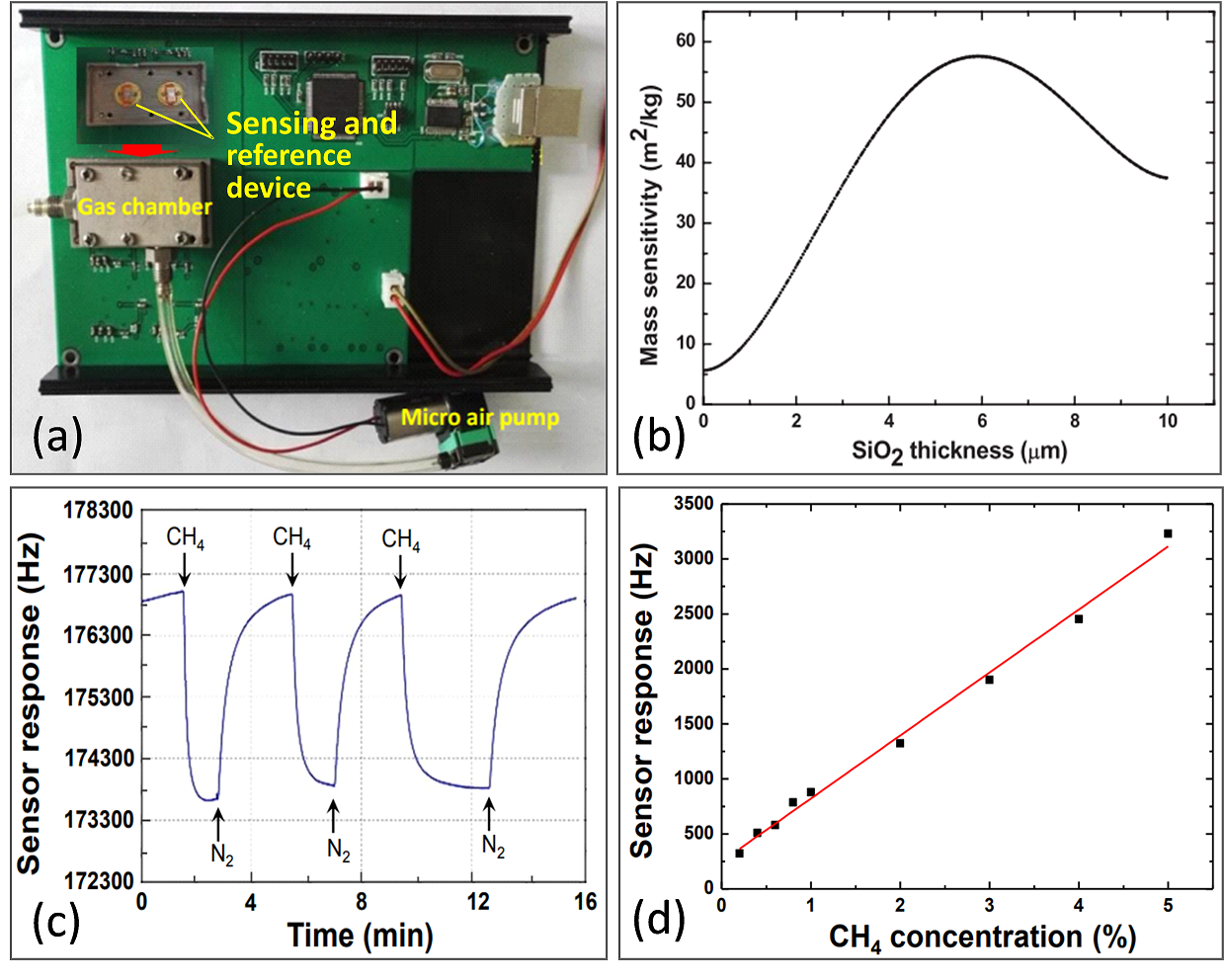Methane gas (CH4) is a colorless, odorless and flammable gas, whose lower explosive limit (LEL) concentration is about 5% by volume in the air. Underground mine methane gas poisoning or explosions can cause huge casualties and property losses. Therefore, a rapid and sensitive methane gas monitoring system should be an effective way to respond to such issues.
Recently, Prof. WANG wen and his colleagues from the Institute of Acoustic (IOA) of the Chinese Academy of Science proposed a new Love wave-based methane gas sensor incorporating Cryptophane-A (CrypA) thin-film, which is composed of a differential oscillation structure and a sensitive CrypA thin-film coated along the wave propagation path of the sensing device surface. The study has been published in the Sensors.
The adsorption in the CrypA thin-film towards methane gas modulates the wave propagation velocity, and it is feasible to collect the corresponding frequency shift to evaluate the detected methane gas.
Due to the waveguide effect, the acoustic wave is confined into the thin-guiding layer, and it becomes more sensitive to surface mass perturbations. Another advantage of the Love wave mode for gas sensing is the temperature-compensation of the device itself, achieved by choosing proper guiding materials possessing reverse polarization of the temperature coefficient to the piezoelectric substrate.
Using the FEM analyses, researchers extracted the feature parameters for coupling of modes (COM) simulation, and the Love wave device was optimized accordingly. The CrypA was synthesized with a typical two-step method, and coated onto the wave propagation path applying a dropping method.
The fabricated Love wave sensing device was connected to a differential oscillation loop, and characterized in gas exposure experiments.
Afterwards, high sensitivity, fast response, and excellent temperature stability were achieved at room temperature (25 °C). Obviously, the proposed Love wave device features higher sensitivity, three times over specifically, compared to the previous Rayleigh-surface acoustic wave-based sensor.

Figure.1 (a) The developed Love wave based sensor system, (b) the contribution from the waveguide effect on sensor sensitivity, (c) stability test, and (d) sensitivity evaluation. (Image by IOA)
Reference:
WANG Wen, FAN Shuyao, LIANG Yong, HE Shitang, PAN Yong, ZHANG Caihong, DONG Chuan. Enhanced Sensitivity of a Love Wave-Based Methane Gas Sensor Incorporating a Cryptophane-A Thin Film. Sensors (Volume 18, October 2018).DOI:10.3390/s18103247.
Contact:
WANG Rongquan
Institute of Acoustics, Chinese Academy of Sciences, 100190 Beijing, China
E-mail: wangrongquan@mail.ioa.ac.cn


